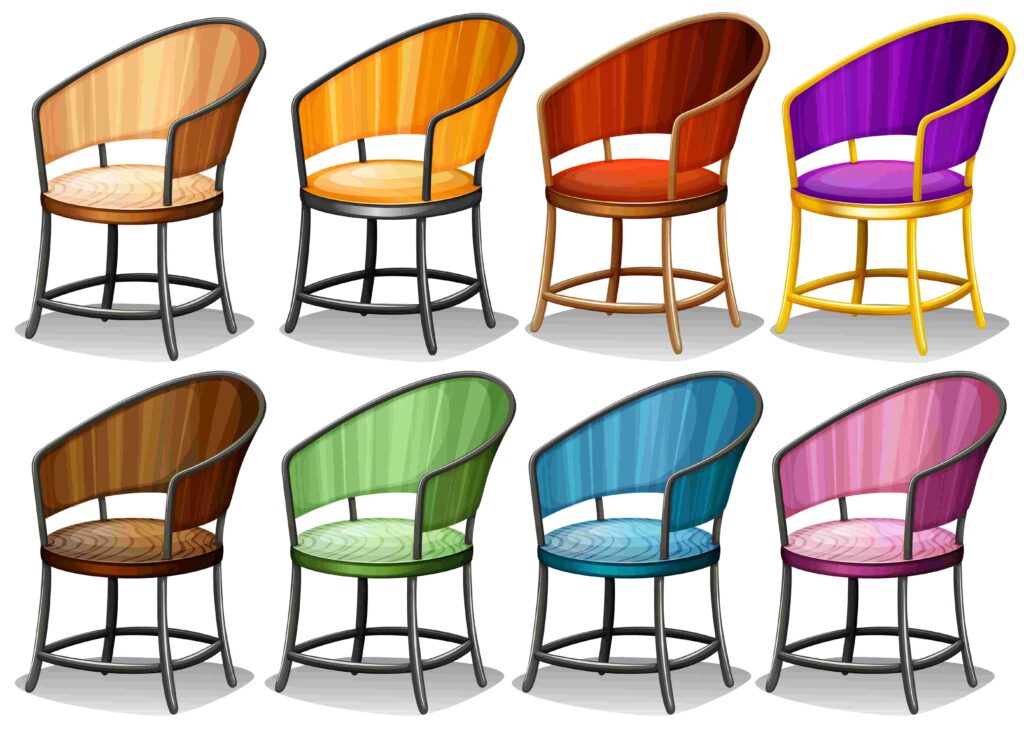Introduction:
High chairs play a crucial role in a baby’s developmental journey, providing a safe and convenient space for them to explore the world of solid foods. However, the decision to choose the right high chair involves careful consideration, especially in the context of safety and age appropriateness. In this article, we delve into the essentials of high chair selection, discussing the potential hazards of vintage models, the ideal age for introduction, and the various types available in the market. Join us as we navigate the world of high chairs, ensuring that your little one’s dining experience is not only enjoyable but, most importantly, safe.
Safety Concerns with Vintage High Chairs
A. Assembly Issues:
Vintage high chairs, while charming, often come with the risk of assembly issues. Over time, wear and tear can compromise the stability of the chair. It’s crucial to thoroughly inspect all components, ensuring that screws are intact, and there are no weakened joints. Purchasing a vintage high chair may require additional effort to guarantee proper assembly and, ultimately, the safety of your little one.
B. Missing Parts and Worn Components:
One of the inherent risks with vintage high chairs lies in the potential absence of essential parts or the wear and tear of existing components. Straps, harnesses, and other safety features may be compromised, posing a hazard to your baby. Before using a vintage high chair, carefully check for missing or worn-out parts, and consider the feasibility of replacing or repairing them to meet modern safety standards.
C. Outdated Safety Standards:
High chair safety standards have evolved over the years, with contemporary models designed to meet stringent guidelines. Vintage high chairs may not adhere to these updated safety standards, potentially exposing your child to risks. From spacing between slats to stability requirements, it’s essential to assess whether a vintage high chair aligns with current safety norms. Prioritize the well-being of your baby by choosing a high chair that meets or exceeds contemporary safety standards.
Appropriate Age for High Chair Usage
A. Baby’s Developmental Milestones:
The introduction of a high chair aligns with a significant developmental milestone – when your baby can sit up on their own. Around the age of six months, most infants achieve the ability to maintain a sitting position without support. This newfound skill marks the perfect time to transition them to a high chair, facilitating a smoother integration into family meals.
B. Introduction of Solids:
High chairs become a necessity as your baby transitions from a solely milk-based diet to incorporating solid foods. The weaning process typically begins around six months when babies show signs of readiness for solids. A high chair provides a secure and elevated platform for your little one to explore new tastes and textures, fostering independence in feeding.
C. Recommended Age (Around 6 months):
Experts recommend introducing a high chair when your baby is around six months old, as this is generally the age when they exhibit the necessary motor skills and developmental readiness for self-feeding. Waiting until this milestone ensures that your baby can sit comfortably and securely in the high chair, minimizing the risk of falls or discomfort during mealtime. Choosing the right time to introduce a high chair is pivotal in enhancing your baby’s feeding experience and promoting a positive relationship with food from an early age.
Types of High Chairs
A. Standard or Traditional High Chairs:
Standard, also known as traditional or classic high chairs, are characterized by their simple, raised seat design. These chairs may or may not come equipped with additional features such as a harness or an attached table. While straightforward in design, traditional high chairs are effective in providing a secure elevated space for your baby during meals.
B. Convertible or Grow-with-Me High Chairs:
Convertible high chairs also referred to as grow-with-me high chairs, are designed with versatility in mind. These modular chairs adapt to the changing needs of your child, often transforming into different seating configurations. From a traditional high chair setup, they can evolve into a booster seat or a toddler chair, extending their usability beyond infancy. Convertible high chairs offer a cost-effective and space-saving solution, catering to the various stages of your child’s development.
Choosing between standard and convertible high chairs depends on your preferences, available space, and the desire for a long-term investment. While traditional high chairs provide a straightforward solution, convertible options offer flexibility and adaptability as your child grows. Consider your lifestyle and the specific needs of your baby to make an informed decision when selecting the type of high chair that best suits your family.
Features of a Traditional High Chair
A. Raised Seat Design:
Traditional high chairs are characterized by a raised seat design, providing an elevated platform for your baby during mealtime. This design ensures that your child is at a comfortable height, allowing them to participate in family meals and fostering a sense of inclusion. The raised seat also makes it easier for caregivers to feed the baby without having to bend down.
B. Presence or Absence of Harness and Table:
Depending on the specific model, traditional high chairs may or may not come with a harness or an attached table. The harness adds an extra layer of safety, securing your baby in the chair to prevent accidental falls. The attached table provides a convenient surface for placing food, utensils, or toys, making it a practical feature for feeding sessions. Carefully consider your preferences and the needs of your baby when choosing a traditional high chair with or without these additional features.
While the raised seat design is a common feature in traditional high chairs, the presence or absence of a harness and table can vary. Evaluate the safety and convenience aspects to determine the most suitable traditional high chair for your baby’s feeding routine.
Defining Vintage Furniture
A. Criteria for Vintage Classification (At least 20 years old):
Vintage furniture is broadly defined as any piece that is at least 20 years old. This classification is based on the idea that furniture from this age range possesses a certain historical and aesthetic value. It’s a marker that distinguishes these pieces from newer items, contributing to the allure of owning a part of the past. When considering vintage high chairs, this time frame becomes a key criterion, signaling the potential uniqueness and craftsmanship associated with older pieces.
B. Inclusion of Restored Pieces:
Interestingly, even if a piece of furniture is over 20 years old but has undergone restoration, it still falls under the category of vintage. Restoration may involve repairs, refinishing, or other forms of rejuvenation to bring the piece back to its original or improved condition. This nuanced definition allows for a broader appreciation of vintage furniture, acknowledging the efforts to preserve and revive these timeless pieces.
C. Specific Eras Considered Retro (1950s to 1980):
Within the vintage category, there is a subset of furniture that is often referred to as retro. This designation typically applies to pieces dating from the 1950s to the 1980s, capturing the distinctive styles and design elements of these eras. Retro furniture, including high chairs, holds a nostalgic charm and is sought after by collectors and enthusiasts for its unique aesthetics and historical significance.
Understanding the criteria for vintage classification, the inclusion of restored pieces, and the specific eras associated with retro furniture provides a foundation for appreciating the timeless appeal of vintage high chairs. When considering these pieces for practical use or as collectors’ items, this knowledge can guide your decision-making process and contribute to a more informed appreciation of these historical artifacts.
Factors Influencing the Price of Vintage Chairs
A. Limited Quantity and Rarity:
One of the primary factors contributing to the often high prices of vintage chairs is their limited quantity and rarity. As these chairs age, fewer well-preserved examples remain, making them coveted by collectors and enthusiasts. The scarcity of vintage high chairs, especially those in excellent condition, drives up their market value.
B. Growing Demand for Quality Vintage Furniture:
In recent years, there has been a noticeable increase in the demand for high-quality vintage furniture. The unique craftsmanship, historical significance, and distinct styles of vintage high chairs attract buyers who appreciate the authenticity and character that these pieces bring to their homes. The growing demand, coupled with the limited supply, results in higher prices for well-preserved vintage chairs.
C. Retained Value Over Time:
Vintage furniture, including high chairs, often retains or increases in value over time. As these pieces age, they become not just functional items but also investments. The durability of materials, coupled with the timeless design, contributes to the sustained value of vintage chairs. Buyers are willing to pay a premium for the authenticity and craftsmanship inherent in these pieces, considering them not only as furnishings but as valuable assets.
The interplay of limited quantity, increasing demand, and the retained value of vintage chairs form the basis for their pricing. For those interested in acquiring a vintage high chair, understanding these factors can guide expectations and highlight the investment potential of these unique and historical pieces.
Market Trends in Vintage Furniture
A. Increasing Demand and Prices:
The market for vintage furniture, including high chairs, has experienced a surge in demand in recent years. Collectors, interior designers, and individuals seeking unique pieces for their homes contribute to this heightened interest. The increased demand, in turn, influences prices, with well-preserved vintage high chairs commanding higher values due to their scarcity and sought-after characteristics.
B. Appreciation for Original Pieces:
Authenticity is a key driver in the vintage furniture market. Buyers often value original, unaltered pieces that showcase the craftsmanship and design of a specific era. Vintage high chairs in their original condition, with minimal restoration or alterations, are particularly prized. The appreciation for originality extends beyond functionality, encompassing the historical and aesthetic value embedded in these genuine artifacts.
C. Impact on the Perception of Value:
The rising demand for vintage furniture has shifted the perception of value in the market. Vintage high chairs are no longer solely functional items; they are considered investments and statement pieces. The cultural and historical significance associated with these chairs adds an intangible value that goes beyond their utilitarian purpose. Buyers are willing to pay premium prices for vintage high chairs that embody the essence of a bygone era.
Understanding the current market trends in vintage furniture, especially high chairs, provides insight into the factors influencing prices and buyer preferences. As the demand continues to grow, the market for vintage high chairs evolves, shaping the way these pieces are perceived and valued in the realm of both functional furniture and collectible artifacts.
Conclusion – Vintage High Chairs
A. Summary of Key Points:
In summary, the selection of a high chair for your baby involves careful consideration of safety, age appropriateness, and personal preferences. Vintage high chairs, while charming, pose potential risks due to assembly issues, missing parts, and outdated safety standards. It’s essential to prioritize the safety and well-being of your child when choosing between vintage and contemporary options.
B. Final Recommendations for High Chair Selection:
When deciding on a high chair, weigh the pros and cons of traditional versus convertible models, taking into account your lifestyle and available space. Consider introducing a high chair around the age of six months, aligning with your baby’s developmental milestones and the commencement of solid food introduction. Ensure that the high chair chosen adheres to modern safety standards, providing a secure and comfortable space for your little one during mealtime.
C. Reflection on Vintage Furniture:
The allure of vintage furniture, including high chairs, lies in its historical significance, unique craftsmanship, and timeless design. Understanding the criteria for vintage classification, the impact of restoration, and the market trends shaping prices can guide your appreciation for these pieces. Whether for practical use or as collector’s items, vintage high chairs offer a blend of functionality and historical charm, contributing to a distinctive and stylish home.
As you embark on the journey of selecting a high chair for your baby or exploring the world of vintage furniture, may this guide empower you with the knowledge needed to make informed choices? Prioritize safety, embrace the beauty of functionality, and consider the rich history encapsulated in every piece of vintage furniture, creating a harmonious blend of past and present in your living spaces.
FAQs – Vintage High Chairs
Q1: Are vintage high chairs safe for my baby?
A1: While charming, vintage high chairs may pose safety risks due to assembly issues and outdated standards. Explore our article to understand the considerations before choosing one.
Q2: When should I introduce a high chair to my baby?
A2: High chairs are recommended around 6 months when babies can sit independently. Learn more about the ideal age and developmental milestones in our comprehensive guide.
Q3: What are the types of high chairs available?
A3: Discover the features of traditional and convertible high chairs. Find out which type aligns best with your preferences and your baby’s evolving needs.
Q4: What makes furniture “vintage”?
A4: Vintage furniture is at least 20 years old, with restored pieces still considered vintage. Explore the nuances of vintage classification and its relevance to high chairs in our article.
Q5: Why are vintage chairs expensive?
A5: Limited quantity, growing demand, and retained value contribute to the high prices of vintage chairs. Dive into our insights on the factors shaping the market for vintage furniture.
Q6: What trends are influencing the market for vintage furniture?
A6: The demand for vintage furniture is on the rise, impacting prices and perceptions of value. Stay updated on the latest market trends in our detailed exploration.
For a deeper understanding of high chair safety, choosing the right type, and delving into the world of vintage furniture, read our full article. Your baby’s comfort and your home’s aesthetic await a thoughtful exploration.



